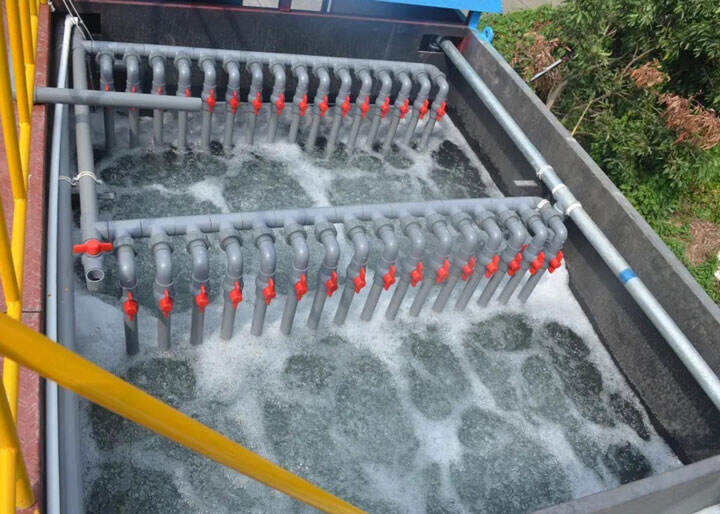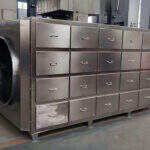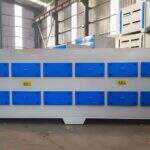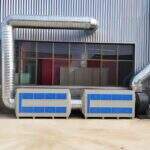What is domestic sewage treatment?
Domestic sewage is mainly various detergents and sewage, garbage, feces, etc. used in urban life, mostly non-toxic inorganic salts. Domestic sewage contains nitrogen, phosphorus, sulfur, and pathogenic bacteria.
The features of domestic sewage treatment?
Domestic sewage contains a large amount of organic matter, such as cellulose, starch, sugars and fatty proteins; it also often contains pathogenic bacteria, viruses and parasite eggs; inorganic salts such as chloride, sulfate, phosphate, bicarbonate and sodium, Potassium, calcium, magnesium, etc. The general feature is that it contains high nitrogen, sulfur and phosphorus content, and is prone to odorous substances under the action of anaerobic bacteria.
The solution of domestic sewage treatment process
◆ Physical treatment method:
The wastewater treatment method of separating and recovering insoluble suspended pollutants (including oil film and oil droplets) in wastewater by physical action can be divided into gravity separation method, centrifugal separation method and sieve retention method. The treatment method based on the principle of heat exchange also belongs to the physical treatment method.
◆ Chemical treatment method:
A wastewater treatment method that separates and removes dissolved and colloidal pollutants in wastewater through chemical reactions and mass transfer, or converts them into harmless substances. In the chemical treatment method, the treatment units based on chemical reaction by adding chemicals are: coagulation, neutralization, redox, etc.; while the treatment units based on mass transfer are: extraction, stripping, stripping , adsorption, ion exchange, electrodialysis and reverse osmosis, etc. The latter two processing units are collectively referred to as membrane separation technology. Among them, the treatment unit that uses mass transfer has both chemical effects and physical effects related to it, so it can also be separated from chemical treatment methods and become another type of treatment method, called physical and chemical methods.
◆ Biological treatment method:
Through the metabolism of microorganisms, the organic pollutants in the waste water in the state of solution, colloid and fine suspension are converted into stable and harmless substances. According to the different microorganisms, biological treatment methods can be divided into two types: aerobic biological treatment and anaerobic biological treatment. Biological treatment of wastewater uses aerobic biological treatment. Traditionally, aerobic biological treatment is divided into two categories: activated sludge method and biofilm method. The activated sludge process is itself a treatment unit, and it operates in a variety of ways. The processing equipment belonging to the biofilm method includes biological filters, biological turntables, biological contact oxidation tanks and biological fluidized beds. Biological oxidation pond method is also called natural biological treatment method. Anaerobic biological treatment, also known as biological reduction treatment, is mainly used to treat high-concentration organic wastewater and sludge, and the treatment equipment used is mainly digester.
◆ Biological contact oxidation method:
The biological contact oxidation method is used to treat wastewater, that is, the biological contact oxidation process is used to fill the filler in the biological reaction tank, and the oxygenated sewage immerses all the filler and flows through the filler at a certain flow rate. The filler is covered with biofilm, and the sewage is in contact with the biofilm. Under the action of the metabolism of microorganisms on the biofilm, the organic pollutants in the sewage are removed and the sewage is purified. The treated wastewater is discharged into the biological contact oxidation treatment system and mixed with domestic sewage for treatment, and then discharged up to the standard after chlorine disinfection. The biological contact oxidation method is a biofilm process between the activated sludge method and the biological filter. In order to ensure that the sewage is in full contact with the filler immersed in the sewage, and to avoid the defect of uneven contact between the sewage and the filler in the biological contact oxidation tank, this aeration device is called blast aeration.
BIOETP provide service for ETP/STP designing, equipment manufacturing, plant installation, operation training and maintenance service. also provide solutions and equipments for almost all kinds of sludge dewatering treatment. also provide smell control solutions and smell control plant and related equipmentsfor APIs industry and feed processing industry.
So, if you have any ETP/STP , sludge dewatering , smell control requirement aroused, please feel free to contact BIOETP. You can find our contact on BIOETP official website www.bioetp.com.






